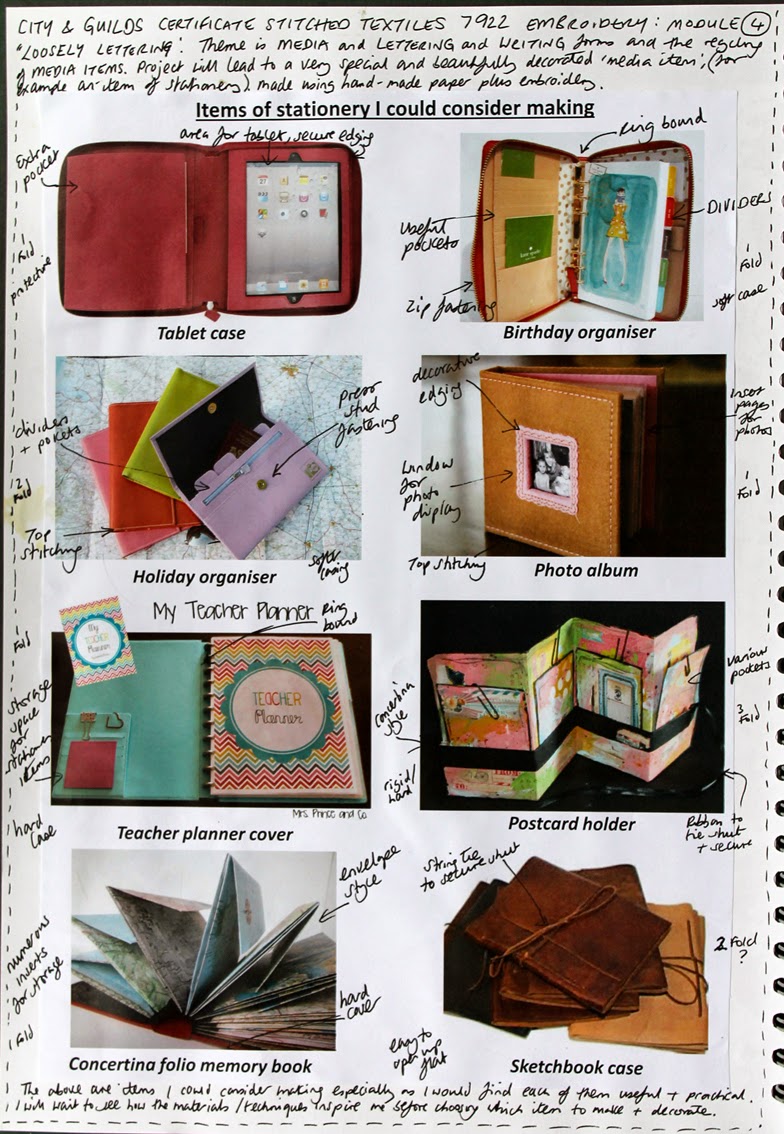One of my paper samples had a mish-mash of threads embedded into it. This had been the result of attempting to create a random style mesh. Although it hadn't come out as intended I did like the resulting pattern the threads made in the paper and the contrast the threads had against the brown paper pulp. On top of this I used the sewing machine to embroider lines of 'loop' stitches. I started by using red thread but then progressed to using black thread in order to bring another dimension to the sample. The results of this are in the image below.
 |
| Module 4, Chapter 8, image 1 |
 |
| Module 4, Chapter 8, image 2 |
The next sample was a drawn-thread paper sample. Once again I used the machine to embroider loop style patterns onto the surface. Initial I was following the natural lines of the threads within the fabric but deviated a couple of times across in a diagonal (cross grain) direction. I wanted to bring an element of the 'dashed' lettering style from my CAD work so used white and red threads to hand embroider the word 'cruise' on top. This did not quite have the visual strength I hoped it would have (and is not too easy to read!) however it did bring an interesting texture to the sample.
 |
| Module 4, Chapter 8, image 3 |
 |
| Module 4, Chapter 8, image 4 |
I decided to use the machine stitching in various patterns to embroider my red fruit netting paper sample. The more stitchery I added to this sample the more I like it. The stitching brings an intensity and interest to it.
 |
| Module 4, Chapter 8, image 5 |
As I am lucky enough to have a sewing machine with lettering stitches programmed into it I thought I would test out and see how the word 'cruise' would look. After testing on a scrap piece of fabric I produced two samples. On sample simply took each letter separately to stitch rows. The other wrote out the word cruise over and over. I made use of overlapping text on this particular sample. I also chose not to cut off the loose threads on this one as I loved the effect that they gave around the edges. This is something I could consider later on for my final piece? I was initially apprehensive that by using the pre-programmed letters my samples would be kind of 'obvious' however with all the layers I feel that they have worked quite well. It also helped that the lettering was simple in style such as the typography I had researched previously.
 |
| Module 4, Chapter 8, image 6 |
 |
| Module 4, Chapter 8, image 7 |
 |
| Module 4, Chapter 8, image 8 |
 |
| Module 4, Chapter 8, image 9 |
 |
| Module 4, Chapter 8, image 10 |



































